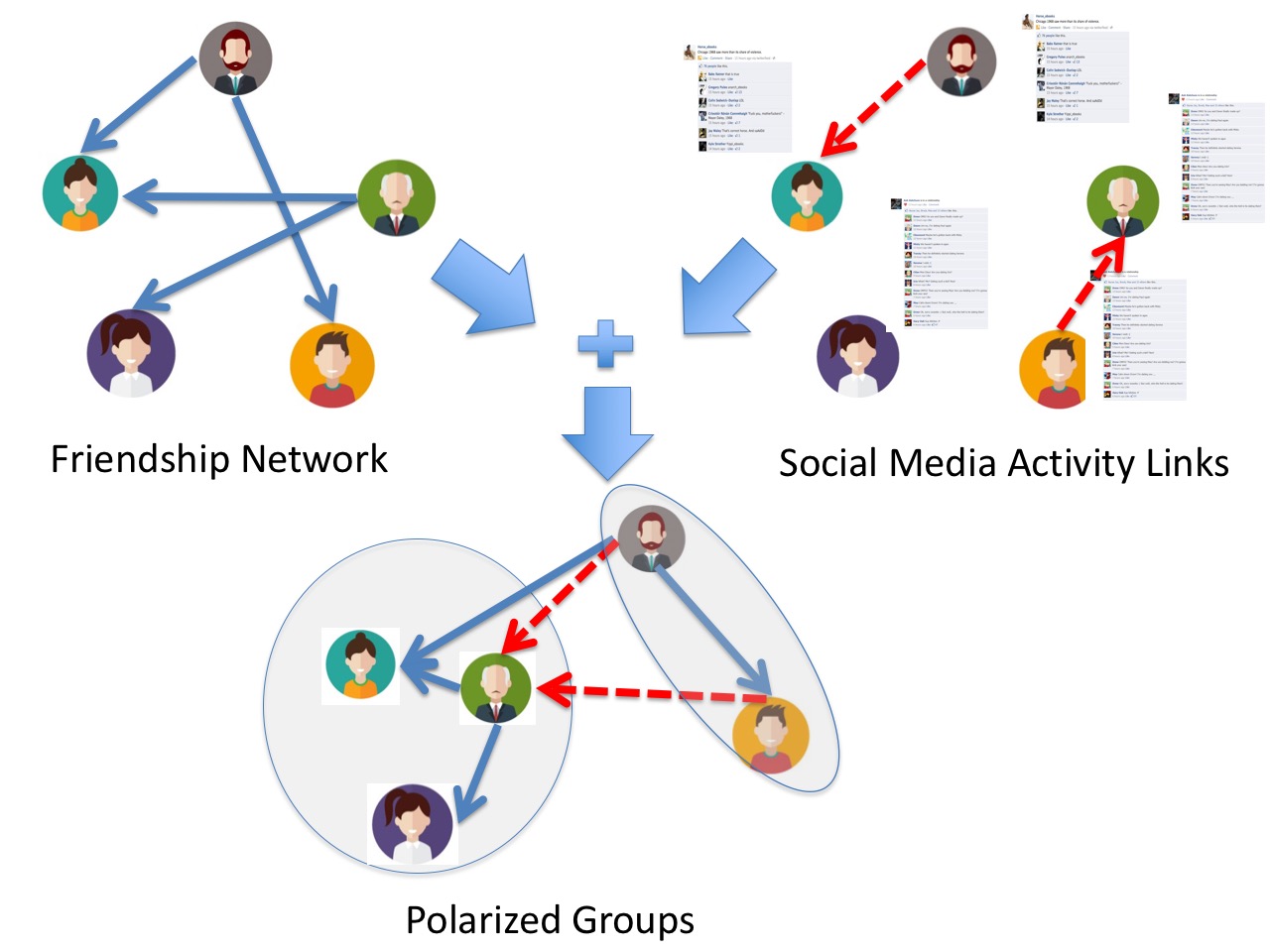Computational Models for Stance Taking on Social Media
Overview | People | Collaborators | Sponsors | Publications | Tools
Project Goal
This project aims to build computational models to learn the stance of users who are active on social media platforms like Twitter. A computational model for stance learning seeks to automate ways to understand people's opinion, and is an active area of research. Machine learning models for stance is of particular importance as they allow to find patterns in online interaction from user-data, thereby lending itself to unsupervised ways of modeling users' opinions. However, the most existing research on Stance takes a simplistic view assuming a 'sentence' (like a Tweet) holding a perspective that is independent of the context and the author. Bois1 defines stance as a public act of evaluating objects, positioning subjects and aligning with other subjects. In the same spirit, we approach stance learning in a broader context of social action wherein authors take a stance to position themselves on topics of interests, thereby, aligning with other stance takers. Unlike prior work, our model positions authors as the core and their alignment with-respect-to-each-other as a crucial to learning stance. Thus, our work proposes a new direction to the stance-learning problem, which is grounded in theory and is more amenable to conversations on social-media.
Methods Used
In our preliminary work on social-media user alignment, we proposed the 'People2Vec'2, an algorithm to learn representations of social-media users that takes into account proximity between users because of their social media activities, in addition to their explicit relationship as in friendship or follower-followee. The algorithm uses the set of messages passed by the users, as well as, their activities in the form of liking or mentioning, and generates the proximity of users as a result.
Peopl2vec, though useful for associating users, did not consider the sentiment of users about topics of interest. Such alignment of users is necessary to understand polarization and echo chambers like interaction on controversial issues. In our related work on fake-news in Ukrainian context3, we have found distinctive pattern in usage of sentiment in sharing fake-news and trusted news article on Twitter. Using 'The Stance Triangle' approach as mentioned before, we are building a computational model that evaluates the authors' position about a topic (target) by analyzing text and sentiment, and simultaneously aligns them with other authors. We use recurrent neural-networks (RNNs) to process user-activities (like posting a message, and liking and mentioning), and a recently proposed message-passing neural-networks to align users. To evaluate the model, we are collecting Tweets on controversial topics including those that are frequently targeted by fake-news. In future, for the final evaluation, we plan to conduct a user survey to build a dataset that has opinion labels for many users on diverse topics.
Expected Results
People2vec takes users friendship links and their activities to position users and identify community membership. The model has shown to improve performance on identifying community labels on two existing datasets. In our work on understanding the usage of sentiment in spread of fake-news3 , we find that Tweets sharing fake-news have more negative sentiment. In contrast, tweets sharing trusted-news have more positive sentiment. As discussed earlier, the ongoing work extends Peopl2vec to use sentiment features. Given a target topic, the proposed model is expected to learn the stance of users engaged in the discussion on the subject. The model will allow identifying polarization in social-media as polarization generally involves a different stance of groups of users. The model is also expected to be useful in echo-chambers like communities as people in echo-chambers have a similar stance that are opaque to outside conversations.

The above figure shows how friendship (or follower-followee) links are often not a great representation on social relations. The virtual links shown in red are generated based on social media activity and leads to two potentially polarized communities.
1Du Bois, J. W. (2007). The stance triangle. Stancetaking in discourse: Subjectivity, evaluation, interaction, 164(3), 139-182.
2Kumar, S., & Carley, K. M. (2018, July). People2Vec: Learning Latent Representations of Users Using Their Social-Media Activities. In International Conference on Social Computing, Behavioral-Cultural Modeling and Prediction and Behavior Representation in Modeling and Simulation (pp. 154-163). Springer, Cham.
3Kumar S. & Carley, K. M., An Anatomical Comparison of Fake-News and Trusted-News Sharing Pattern on Twitter - forthcoming




